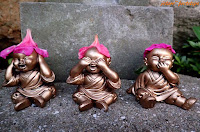You are at - Jotaro's Blog / Footsteps-AhPek Biker / Art Gallery-Cycling Europe 2017 / European Art 2017 / German Art At Dusseldorf Old City Centre
Footsteps - Jotaro's Travels
German Art At Dusseldorf Old City Centre
 |
| Wall mural showing a jester stealing a blue anchor; behind him are the paws and double-tail red lion which is chasing him. The anchor and red lion are both part of Dusseldorf's city flag and coat of arms. |
These are photos below gives a representation of what I saw; but nothing beats going there to see them for yourselves.
The following were seen at Brauerei Schumacher.
Glazed porcelain plate with scenery of a medieval family ringed by cherubs.
Scene of cavalry soldiers at Dusseldorf Marktplatz viewing the equestrian statue of Jan Wellem (Johann Wilhelm II) located in front of the Dusseldorf Altstadt - bronze statue by Gabriël de Grupello (1711).
Dusseldorf street scene of late 19th century - oil on canvas painting.
_________________________________________________________________________
Stylized 3-D painting of Dusseldorf's city flag and coat of arms at entrance door into the Rathauz from the Marktplatz.
Colourful poster of hippy-ish flower people foxie couple - near St. Lambertus.
Jesus "Way of the Cross" painted plaque - inside St. Lambertus.
Scene on 19th century steamer boat on the Rhine - watercolor painting seen at the Schifffahrtsmuseum (Maritime Museum).
Late 19th century sailing pass pontoon bridge on the Rhine - oil on canvas painting seen at the Schifffahrtsmuseum (Maritime Museum).
Paddler steamboat berthing on the Rhine in front of Dusseldrof's Grand Hotel Royal - painting seen at the Schifffahrtsmuseum (Maritime Museum).
Old Dusseldorf seen from the Rheinwiesen State Park, a bridge is being constructed across the Rhine - painting seen at the Schifffahrtsmuseum (Maritime Museum).
Riverside medieval tower crane unloading Rhine river barges - painting seen at the Schifffahrtsmuseum (Maritime Museum).
Passengers under a tarpaulin shade on board a Paddler steamboat cruising the Rhine - painting seen at the Schifffahrtsmuseum (Maritime Museum).
Dusseldorf's city flag and coat of arms - painting seen at the Schifffahrtsmuseum (Maritime Museum).
Fountain with Three Wild Geese bronze statues (Gänsebrunnen Düsseldorf) - seen near Marktplatz.
Bronze wall plaque bust of Jürgen Rieck at German carnivalist - seen near Marktplatz.
Young boys tanning leather - seen near Marktplatz.
Bronze statue of a lion and an anchor representing Dusseldorf's city flag and coat of arms - seen on top of tall stone column near Marktplatz.
Statue of Jesus on the cross at Calvary Hill together with the Penitent thief - at abutting external wall of St. Lambertus.
Statue of a saint - above entry doorway into of St. Lambertus.
Statues of a saints - above entry doorway into of St. Lambertus.
Mother Mary with crucified Jesus - internal shrine St. Lambertus.
Mother Mary and Mary Magdalene with Jesus on the cross at Calvary Hill with Roman soldier looking on - timber statues inside St. Lambertus.
Detailed hanging carved timber roof over pulpit at St. Lambertus.
Diorama of Dusseldorf's City Palace, Schifffahrtsmuseum occupies the circular tower on the right, the only structure that is left of the place - at the Schifffahrtsmuseum (Maritime Museum).
Young small boy with leather tanning tool - bronze statue on grounds of timber statues of St. Lambertus.
Cart-wheeling young boys - bronze statues at Fountain Radschlager on the Burgplatz Square.
Late 19th century and early 20th century, many travelers came to the city for major exhibitions -the forerunners of today's fairs. The children discovered that cartwheels was a lucrative source of income, as the incoming bourgeois paid them up to a penny for what they thought was a "local and patriotic" symbol.
In 1945, after the war-evacuated Jan-Wellem monument was brought back to the city, not only torches and fanfare accompanied it, but also cartwheeling boys.
Equestrian statue of Jan Wellem (Johann Wilhelm II) located in front of the Dusseldorf Altstadt at Marktplatz - bronze statue by Gabriël de Grupello (1711).
Four caryatids, the personifications of music, painting, sculpture and architecture - 1880/81 stone statues by sculptor Wilhelm Albermann seen at Vier Karyatiden.
Related / Similar Blogs :
You are at - Jotaro's Blog / Footsteps-AhPek Biker / Art Gallery-Cycling Europe 2017 / European Art 2017 / German Art At Dusseldorf Old City Centre
If you like this, view my other blogs at Jotaro's Blog
(comments most welcomed below. if you like this pls share via Facebook or Twitter)
(comments most welcomed below. if you like this pls share via Facebook or Twitter)


















































Dusseldorf is really a beautiful place to visit. Thank you for sharing about this German art gallery with us.
ReplyDeleteDüsseldorf Hotel